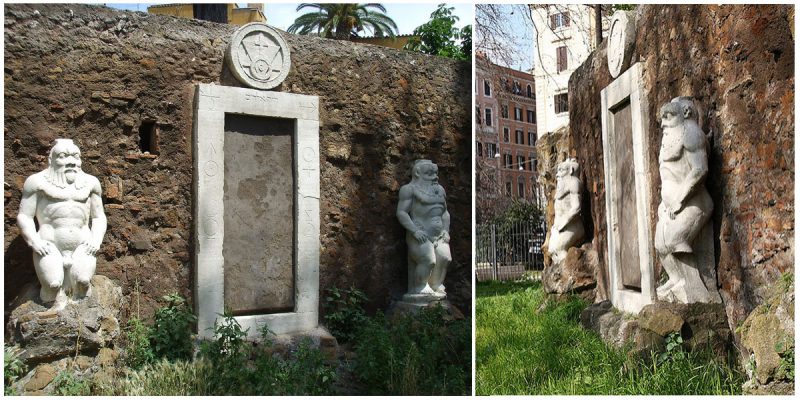The Alchemical Door, also called the Magic Door, Alchemy Gate, Door Hermetic or the Gate of Heaven, is a monument built between 1678 and 1680 by the Marquis Massimiliano Palombara Pietraforte (1614-1680) at his residence, the Villa Palombara. It is located in the eastern countryside of Rome, on the Esquiline hill, near Piazza Vitorio Emanuele in Rome, and it was the entrance of Palombara’s laboratory. The Marquis built it as a result of his passion for esoteric sciences and occult practices.
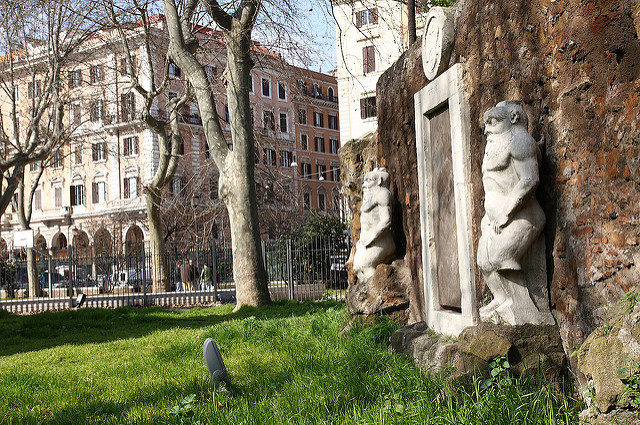
The Alchemical Door is the only survivor of the five gates of Palombara Villa. There is a legend about Giuseppe Francesco Borri, also known as Giustinjano Bono, who searched the gardens of the villa overnight looking for a mysterious herb capable of concocting gold. The next morning he was seen to disappear forever through a door.
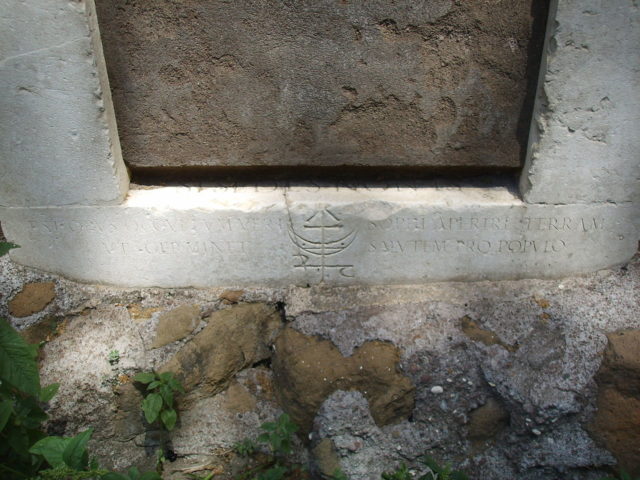
When he vanished, he left behind a few flakes of gold, apparently evidence of his successful transformation. He also left a mysterious paper full of puzzling symbols and equations which describe the ingredients and process required for that magic. The symbols were engraved on the five gates of the Villa Palombara and on the walls of the mansion, hoping that one day they would be translated.
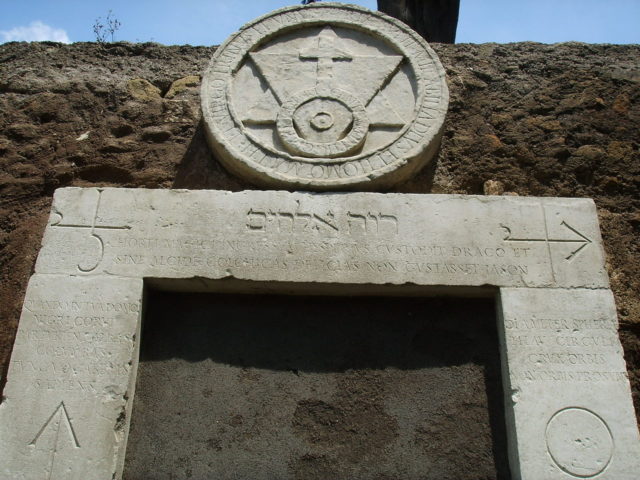
The particular design on the pediment of the gate, with two overlapping triangles and inscriptions in Latin, appears almost the same as on the title page of the alchemical book Aureum Saeculum Redivivum. In fact, the design which inspired Palombara appears only in the posthumous edition of 1677.
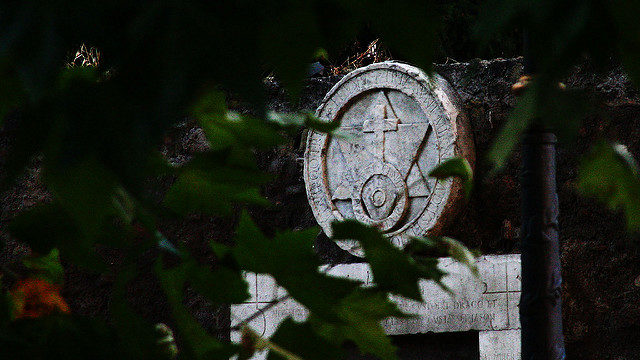
The portal is flanked by two seemingly bizarre statues with short, stout legs and a grotesque bearded face representing a real Egyptian deity called Bes. Originally, the statues did not belong to Villa Plamobara. They were found somewhere near the Quirinal Hill, where a temple once stood in ancient times, dedicated to the Egyptian gods Isis and Serapis. These statues were moved to the Porta Alchemica from their original location in 1888.
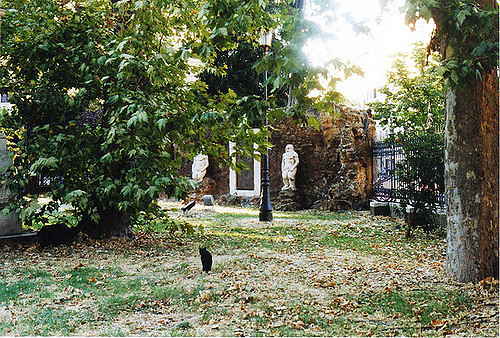
The statues have the function of guardians. Palombara decided to put these two beings in front of the villa to save the port and its precious inscriptions from destruction.
